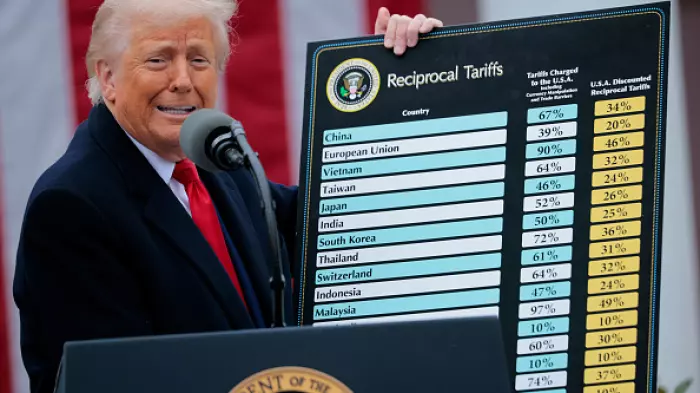Aussie firms are beating Kiwis in solar use – but that can change.
It's not just residents struggling with power prices. Businesses are also caught in the grip of New Zealand’s archaic and complex electricity system – though one expert says few realise there is an easy way to cut rising costs.
Rory McCarthy, chief operating officer for Lightforce Solar and highly experienced developer in commercial and industrial provision of solar energy for companies around the world, says New Zealand is lamentably behind when it comes to using solar power to cut electricity costs.
Businesses could save somewhere between 20-50% of their energy costs, he says, hard on the heels of a New Zealand Herald investigation into how 100,000 New Zealanders are struggling to pay power bills.
According to a 2022 MBIE report, 110,000 households cannot keep warm. Meanwhile, the four big power “gentailers” (who generate electricity as well as sell it) make collective profits of $2.85 billion per year – a whopping $7.8 million every day.
“In Australia, 16-20% of commercial and industrial businesses have invested in solar and have enjoyed the benefits. In New Zealand, it’s just 1%,” says McCarthy, who will be speaking on this topic at a Business Breakfast in August.
“We know – from Australia and other countries around the world that have been quicker and smarter to adopt solar – that most commercial and industrial businesses can cut their energy costs by 20-50% a year. That is huge. It’s even more – like 40-60% – for high usage companies in industries like construction, food, concrete, steel, mining and forestry.”
 Rory McCarthy, Chief Operating Officer for Lightforce and Simon Watts, Minister for Energy, at Lightforce Solar install.
Rory McCarthy, Chief Operating Officer for Lightforce and Simon Watts, Minister for Energy, at Lightforce Solar install.
Solar power in homes has been similarly slow to grow. Only 3% of New Zealand’s households have employed solar power, compared to 40% in Victoria, the Australian state whose climate most closely resembles New Zealand’s.
“There are some companies that are really onto it. They are embracing solar and making strides now to meet the demands of new import standards that could mean barriers for New Zealand companies exporting like CBAM [the EU’s Carbon Border Adjustment Mechanism],” says McCarthy. CBAM will affect New Zealand exports to Europe from starting 1st of January 2026 and will apply to all exports in the United Kingdom from 2027 levying direct and indirect emissions embedded in their products.
Closer to home, Lightforce Solar is already partnering with major brands like Air New Zealand and delivering strong results through a northern community pilot project now six months in. Overhauling New Zealand’s archaic electricity infrastructure is a complex issue, McCarthy says, “but there are things that can easily be done now to benefit businesses and the New Zealand economy”:
- Finance – Make low-cost loans available to help businesses switch to solar and replace things like vehicle fleets and gas boilers with electric. “Australia began their solar drive with subsidies – but there is much that can be done right now, even without that it makes sense.”
- Cutting red tape – Limits on solar system size stem from fears our ageing transmission system can’t handle excess energy. “If you want a 500kW system, you might be told you only have a permit for a 300kW sized system. That’s where Lightforce Solar plays a vital role – partnering with businesses to design solar solutions that align with their energy use, maximise long-term savings, strengthen energy resilience, and guard against rising electricity costs.
- Fairness – “The gentailers want to make a profit – but it just doesn’t seem fair they pay NZ consumers 8 cents per kWh for your power but sell you theirs at 33 cents.” In June, the Government announced a review of how solar users are compensated for exporting energy – a change that could lead to fairer outcomes over time.
- Focus – New Zealand’s transmissions companies do a good job, he says, but too many have turned their profits into diversifying their company portfolio instead of pouring the money back into the transmission system. “One invested in a wine company; others in a cyber security business, another in fibre-optics for telco transmission towers, instead of investing and maintaining the infrastructure of our country’s transmission lines. You have to ask – is this best serving New Zealand?”
- Ease of access – “In Australia, getting a permit for a residential system takes 72 hours. In New Zealand, it takes six weeks – sometimes more. For a commercial or industrial permit depending on the transmission company it takes up to 3 months”
Countries like Sweden – similar in size and population to New Zealand – have much more advanced renewable energy systems and electric vehicle adoption. Dubai and Abu Dhabi have made a huge, co-ordinated, legislative move, using solar power and battery storage systems to lead industry into a renewable energy era. “That’s in a place where petrol costs 65c a litre and there are absolutely no subsidies on renewable it has to stand on its own feet and beat fossil fuel alternatives”.
There are three main points all New Zealand businesses should consider: “First, switching to solar and renewable energy is not a climate solution – but it is a considerable business advantage. Second, you can cut emissions and cut costs. Finally, you can vastly improve your company’s resilience.
Many businesses are locked into five-year contracts with major electricity retailers (gentailers), often facing significant penalties for early termination or for adding solar generation that reduces their grid consumption. One Lightforce Solar customer was quoted a $50,000 penalty simply for planning to reduce their energy usage through solar. What happens is that, within five years, the cost goes up and you then have to sign another five-year contract. New Zealand has seen over 40% power increases for business in the last five years. Going renewable means, you can control much of your own power, you can control your budget better than a system on the spot market where the price of power changes every half hour. Using your own power on-site is a huge saving – and you can plan into the future with power being much more of a fixed cost, than an increasing variable hurting the profitability of your business.
“Why wouldn’t you do that?”
To learn more about how your business could benefit from solar, visit lightforce.co.nz.






